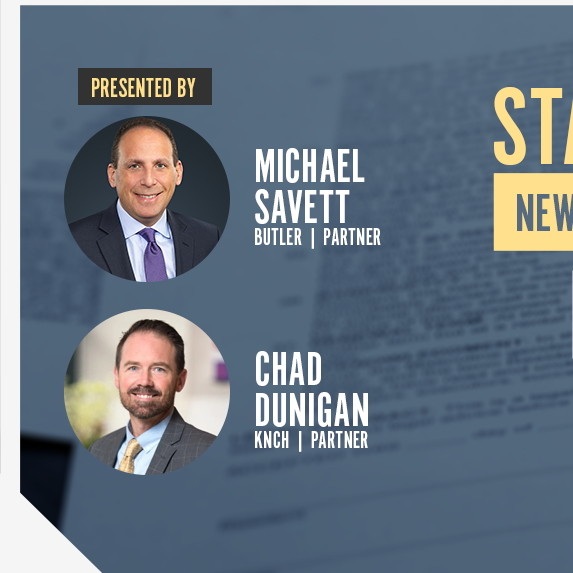
Attorney-Client Privilege And Work Product Protection: Brief Overview
July 24, 2018
This article is originally a publication of the National Insurance Law Forum, July 2018. Legal opinions may vary when based on subtle factual differences. All rights reserved.
Claims investigations involving counsel often include communications relating to his or her understanding of the facts, opinions of relevant law, and recommendations. Oftentimes, claim notes or other claim file materials reference all or portions of such communications. Due to their sensitive nature, it is important to be aware of what materials may ultimately be discoverable. Though the work product protection and the attorney-client privilege are generally understood to limit discovery of certain materials, the devil is in the details.
In a federal diversity of citizenship case, federal law governs the protection of work product while state law governs the attorney-client privilege.
Work Product Protection
Claims of work product protection are governed by the principles set forth in Federal Rule of Civil Procedure 26(b)(3), which reads in pertinent part:
(A) Documents and Tangible Things. a party may not discover documents and tangible things that are prepared in anticipation of litigation or for trial by or for another party or its representative (including the other party’s attorney, consultant, surety, indemnitor, insurer, or agent). But, subject to Rule 26(b)(4), those materials may be discovered if:
- they are otherwise discoverable under Rule 26(b)(1); and
- the party shows that it has substantial need for the materials to prepare its case and cannot, without undue hardship, obtain their substantial equivalent by other means.
(B) Protection Against Disclosure. If the court orders discovery of those materials, it must protect against disclosure of the mental impressions, conclusions, opinions, or legal theories of a party’s attorney or other representatives concerning the litigation.
. . .
Thus, a party must anticipate litigation at the time the documents were drafted for these protections to apply. Materials or documents drafted in the ordinary course of business are not protected. The burden is on the party withholding discovery to show that the documents should be afforded work-product immunity. As a consequence, to determine whether the protection is applicable, the court must determine when the document was created, and why it was created. Because an insurance company investigates claims in the ordinary course of its business, the boundary between discoverable documents and protected work product is not always clear.
For the first time in the Eleventh Circuit, the court in Milinazzo specifically addressed the application of the work product doctrine to an insurer’s investigation of claims. The court rejected a rule that would protect documents constituting any part of a factual inquiry into or evaluation of a claim, undertaken in order to arrive at a claim decision, reasoning that it is in the ordinary course of business for an insurance company to investigate a claim with an eye toward litigation. The court ultimately accepted the analysis and rebuttable presumptions established in Harper v. Auto-Owners Ins. Co. Specifically, the court held that documents or things prepared before the final decision on an insured’s claim were presumed not to be work product and that documents produced after claims denial were presumed to be work product. The presumption could be rebutted “by specific evidentiary proof of objective facts.” Where complete adherence to a presumption would be impractical, a reasonably analogous alternative may be used.
In determining whether the presumption has been rebutted, the courts have considered the length of time between the alleged date of anticipated litigation and the date suit was actually filed, whether the parties were working toward a resolution and whether there was a clear intention to sue exhibited by one of the parties. “That burden [to establish a privilege applies] is not, of course, discharged by mere conclusory or ipse dixit assertions, for any such rule would foreclose meaningful inquiry into the existence of the relationship, and any spurious claims could never be exposed.” Rather, the party claiming a privilege must provide the court with underlying facts demonstrating the existence of the privilege, which may be accomplished by affidavit.
Attorney-Client Privilege
In diversity actions, the attorney-client privilege is governed by state law. In Florida, F.S. 90.502 provides that the attorney-client privilege exists when a client consults “a lawyer with the purpose of obtaining legal services,” or with a lawyer who is rendering legal services. But, because corporate claims of attorney-client privilege are treated with more suspicion, the Florida Supreme Court in Southern Bell Tel. & Tel. Co. v. Deason held that a corporation must demonstrate the following, in order to assert attorney-client privilege:
- the communication would not have been made but for the contemplation of legal services;
- the employee making the communication did so at the direction of his or her corporate superior;
- the superior made the request of the employee as part of the corporation’s efforts to secure legal advice or services;
- the content of the communication relates to the legal services being rendered, and the subject matter of the communication is within the scope of the employee’s duties; and
- the communication is not disseminated beyond those persons who, because of the corporate structure, need to know its contents.
Again, the nature of an insurance company’s claim investigation and the attorney’s role in it complicates the analysis.
In 1550 Brickell Associates v. Q.B.E. Ins. Co., the court’s analysis of communications between an insurer and its attorney focused on the first of these factors, beginning with the legal framework for it. At the outset, the court recognized the holding of Florida’s First District Court of Appeals in Bankers Insurance Company, that communications with an attorney, who was hired as an investigator for an insurance company, were not privileged because the attorney functioned as a mere “conduit.” The court next acknowledged that, in Milinazzo, it previously had read the Bankers and Southern Bell decisions to mean together that “[i]n an insurance context, the attorney-client privilege only attaches when an attorney performs acts for an insurer in his professional capacity and in anticipation of litigation,” which the court considered to be, “a natural and logical reading of the two cases.” In this context, the court in 1550 Brickell resolved the question of attorney-client privilege by determining the point at which QBE anticipated litigation. Based upon the adjuster’s testimony that the attorney had been initially retained to “assist … in developing the investigation, securing examinations under oath and, you know, propound[ ] document requests and things of that nature,” the court concluded the attorney initially acted as a conduit. Finding QBE had not convincingly argued that the attorney’s position changed before 1550 Brickell filed suit, the court ruled that no document created prior to suit was covered by attorney-client privilege.
Notably, Florida appellate courts mandate that state trial courts conduct an in camera review upon a very minimal showing by the proponent of the privilege, and have reversed decisions in which such review was not conducted. Nevertheless, a party to a diversity action in federal court does not satisfy its burden of proving that a privilege applies by merely asserting a privilege. Nor does a party satisfy its burden by simply asking that the court conduct an in camera review of documents which the party hopes to keep confidential—instead, the party first must present some evidence to convince the court that the privilege might apply.
In Clena Investments, Inc. v. XL Specialty Ins. Co., the court considered the carrier’s assertion of attorney-client privilege as the ground for withholding a set of documents described in its amended privilege log as “[i]nternal notes containing attorney-client communications regarding the Plaintiffs Hurricane Wilma claim and the Civil Remedy Notice of Insurer Violation and lawsuit filed by Plaintiff against XL.” The court concluded the notes pertaining to “Plaintiff’s Hurricane Wilma” claim were relevant to the carrier’s determination of the underlying insurance claim, and therefore, were discoverable under Florida law. The notes pertaining to the CRN and to the pending lawsuit were not relevant to the underlying insurance claim, but rather to the lawsuit resulting from the insurance claim, and were therefore protected by the attorney-client privilege. Accordingly, the court concluded that any notes concerning the carrier’s denial of the underlying insurance claim that were drafted before it reasonably anticipated litigation must be produced.
Conclusion
These are only the broadest contours of the attorney-client privilege and work-product protection, highlighting areas of claims investigations where they may be more limited than is generally understood. Given the potential sensitivity of the materials typically at issue, it is important to maintain an awareness of the relevant thresholds of discoverability both before and after litigation is reasonably anticipated. Simply assuming that communication between an attorney and his or her client will be privileged and/or protected as work product, risks disclosure.



